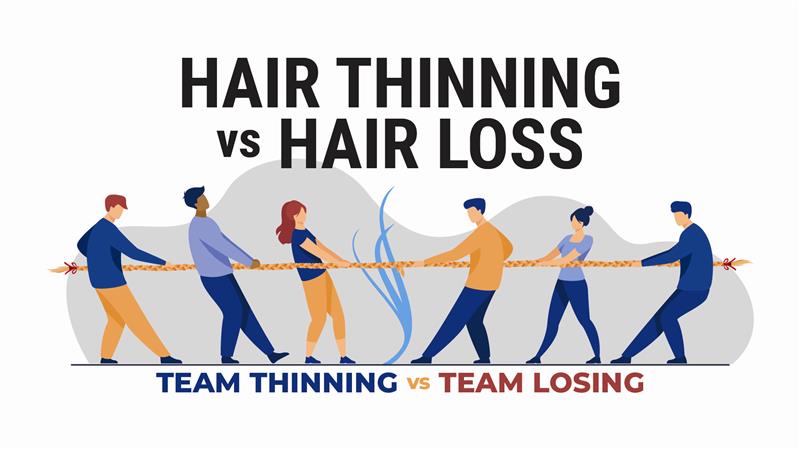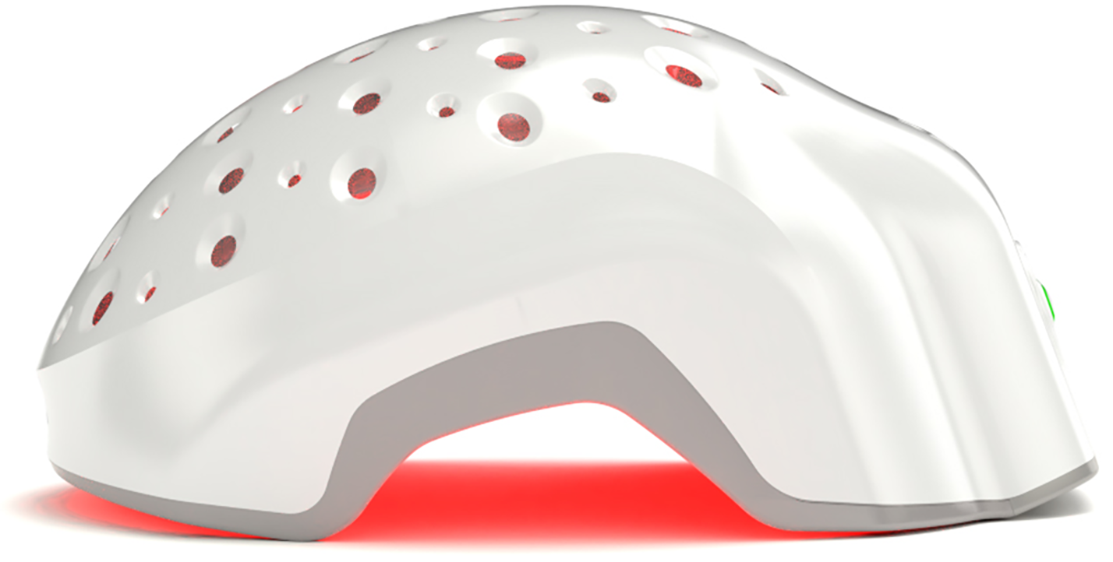Hair thinning vs hair loss sounds like a technicality—until you're staring at your widening part in horror and wondering if your hair is slowly quitting on you. And thanks to vague TikTok "tips" and recycled myths, people confuse one for the other all the time. Look, they’re not the same. One signals early trouble, the other usually means it's already here.
Hair thinning is often subtle and slow, showing up as reduced volume or an annoyingly visible scalp. Hair loss is bolder. It hits in patches, recedes at the hairline, and sometimes comes with a side of panic. If you’re treating one like the other, you might be wasting time—and possibly your hair.
The confusion isn’t just common, it’s costly. Thinning may not need medication. Hair loss might not be fixed with biotin smoothies. Knowing what you’re actually dealing with changes everything about how (and whether) it can be reversed.
This guide breaks down the five key differences between hair thinning vs hair loss—because clarity beats guesswork every time.
What is Hair Thinning?
Hair thinning is the slow, sneaky reduction in your hair’s density. It doesn’t cause bald spots or dramatic clumps in the shower drain—at least not at first. Instead, you’ll likely notice less volume, more visible scalp, and a general “where did my hair go?” feeling when you tie it up or part it.
Signs of Hair Thinning:
- Overall hair volume reduced
- Increase in scalp visibility
- Diffuse pattern across the scalp
What are the Causes of Hair Thinning?
Most people link hair thinning to genetics or age—and while those are fair guesses, they're only half the truth. Many hair thinning causes are lifestyle-driven and, yes, reversible if you catch them early enough.
-
Stress: Prolonged stress can disrupt the hair growth cycle, pushing follicles into an early “rest” phase (telogen effluvium), causing noticeable thinning over time.
-
Aging: Hair naturally becomes finer and less dense as part of the aging process—especially for women post-menopause.
-
Hormonal changes: Pregnancy, perimenopause, and post-partum hormone shifts can throttle down hair production temporarily.
-
Poor nutrition: A lack of protein, iron, zinc, and vitamin D can reduce hair strength and growth rate.
-
Overuse of chemicals: Repeated coloring, bleaching, or use of sulfates and parabens can degrade hair shaft quality.
-
Medical conditions: Conditions like anemia, thyroid imbalances, or PCOS can also throttle follicle productivity.
How To Stop Hair Thinning?
While thinning hair isn’t always a full-blown crisis, it deserves attention. If addressed early, many cases respond well to low-effort, high-impact lifestyle changes—actual hair thinning remedies that don’t come in a $100 bottle.
-
Proper nutrition: Include iron-rich foods, lean proteins, and plenty of antioxidants. What you eat really does grow your strands.
-
Scalp massage: Stimulates circulation and delivers oxygen and nutrients to follicles. Plus, it feels fantastic.
-
Avoid harsh chemicals: Sulfates, alcohols, and over-processed styling products wreak havoc on hair integrity.
-
Proper hair care: Use a wide-tooth comb, wash less aggressively, and cut back on tight hairstyles.
-
Manage stress: Cortisol is a follicle killer. Prioritize rest and recovery if you want your hair to cooperate.
Also Read: How to add volume in hair and make it look thicker?
What is Hair Loss?
Hair loss is clinical. It involves fewer active follicles producing hair and usually manifests in specific, concentrated areas. Unlike thinning, hair loss typically requires medical attention and targeted hair loss treatment to slow or reverse the damage.
Signs of Hair Loss:
- Noticeable hair shedding
- Bald spots or receding hairline
- More concentrated in specific areas like crown or hairline
What are the Causes of Hair Loss?
Hair loss has deeper biological roots, often linked to heredity or immune issues. Unlike thinning, you can’t always reverse it with diet or TLC.
-
Genetics: Androgenetic alopecia, also called male or female pattern baldness, is the most common culprit and causes permanent follicle shrinkage.
-
Hormonal imbalance: In men, excess levels of DHT—a byproduct of testosterone—can shrink hair follicles over time, leading to classic receding hairlines and thinning at the crown. In women, conditions like PCOS or thyroid dysfunction can disrupt hormone levels and alter hair growth cycles.
-
Autoimmune disease: Conditions like alopecia areata cause the immune system to attack healthy follicles, often leading to sudden bald patches.
How to Treat Hair Loss?
If you’ve crossed over from thinning into true loss, treatments need to meet the issue at its root—literally.
-
Minoxidil: A topical solution that increases blood flow and prolongs the anagen (growth) phase of hair.
-
Finasteride: A DHT-blocking oral medication mainly used for male pattern baldness.
-
Steroid creams: Useful in autoimmune cases to reduce inflammation and follicle suppression.
-
Laser therapy: Clinical laser phototherapy (LPT) or low-level light therapy (LLLT) stimulates hair follicles using safe, cool light. Devices like the Theradome helmet are FDA-cleared and have demonstrated improvements in hair density restoration.
-
Hair transplant: For advanced loss, transplants relocate healthy follicles to balding areas—but come with cost, downtime, and mixed reviews.
Results vary depending on the underlying cause. Always consult a professional before starting any hair loss regimen.
Hair Thinning vs Hair Loss: Key Differences
| Features | Hair Thinning | Hair Loss |
| Appearance | Overall density decrease | Bald spots or receding hairline |
| Progression | Gradual, diffuse | Sudden or patterned |
| Location | All over scalp | Localized (crown, hairline, temples) |
| Cause | Stress, lifestyle, mild hormonal changes | Genetics, autoimmune, endocrine dysfunction |
| Action Needed | Lifestyle changes, nutrition, hair care | Clinical treatment, medication, or laser tech |
Can Hair Thinning Turn Into Hair Loss?
Yes, and here’s where things get tricky. What starts as general thinning—especially in women—can gradually transition into hair thinning patterns linked to androgenetic alopecia. This is often misread as “just stress” until a widening part turns into a visible scalp situation.
On the flip side, not all thinning leads to permanent loss. Hair shedding vs hair loss becomes relevant when the trigger (say, iron deficiency or extreme dieting) is corrected. Once follicles get what they need, regrowth can resume. The trick? Act fast. The longer you wait, the more dormant those follicles can become—and some won’t come back.
Conclusion
Hair thinning vs hair loss isn't just a semantic debate—it’s the difference between minor tweaks and clinical intervention. One fades in quietly, the other leaves bold patches. Knowing the distinction is the first (and most important) step in choosing what actually works.
And yes, you can treat both. Whether you’re looking to slow shedding, fill in sparse areas, or kickstart stalled follicles, the tools exist—diet, science, and smart tech included. Just don’t treat every bad hair day like it’s doomsday. Understanding the why behind your hair change is where real solutions begin.






















